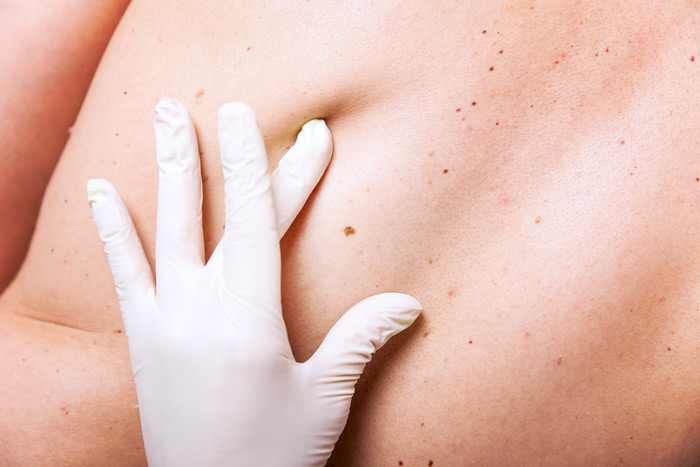Early Detection
Sun Avoidance Is the Best Defense Against Skin Cancer
The principal cause of skin cancer is almost universally accepted by medical experts to be overexposure to sunlight, especially when it results in sunburn and blistering. Other less important factors would include: repeated medical and industrial x-ray exposure; scarring from diseases or burns; occupational exposure to such compounds as coal and arsenic, and family history.
Prevention is a matter of guarding the skin against the known causes. Since the sun and its ultraviolet rays would seem to be the main culprit, the most effective preventive method is sun avoidance. Limit the exposure of the skin to harmful rays by covering up and using sunscreens with at least a 15 SPF rating.

Early Detection Is the Surest Way to a Cure
It is a simple routine to inspect your body for any skin changes. Actinic keratosis and each of the skin cancers depicted in the following pages can be readily detected. If any growth, moles, sore or discoloration appears suddenly or begins to change, see your dermatologist.
Precancerous Skin Conditions
In addition to the types of skin cancers illustrated here, be alert for a precancerous lesion called actinic keratosis. These small scaly spots are most commonly found on the face and back of the hands in fair-skinned individuals who have had significant sun exposure. If they are not treated, some of them may become skin cancer, requiring more extensive treatment. If they are diagnosed in the early stages, actinic keratosis can be removed by cryotherapy (freezing), by applying a topical form of chemotherapy or by other outpatient procedures.
